Canopy Newsletter 9 – Oct 2018
OCTOBER 12, 2018
It’s been a while since we’ve been in touch, so it’s about time we shared some of our exciting new developments.
Secondary Lap Sensitivities
A new simulation type is available on your account; Dynamic Lap (SLS). This enables computation of local lap time sensitivities to front & rear downforce, drag, power and grip. When targeting performance upgrades this allows you to identify where the lap time benefits originate from. You can read more about this on our blog.
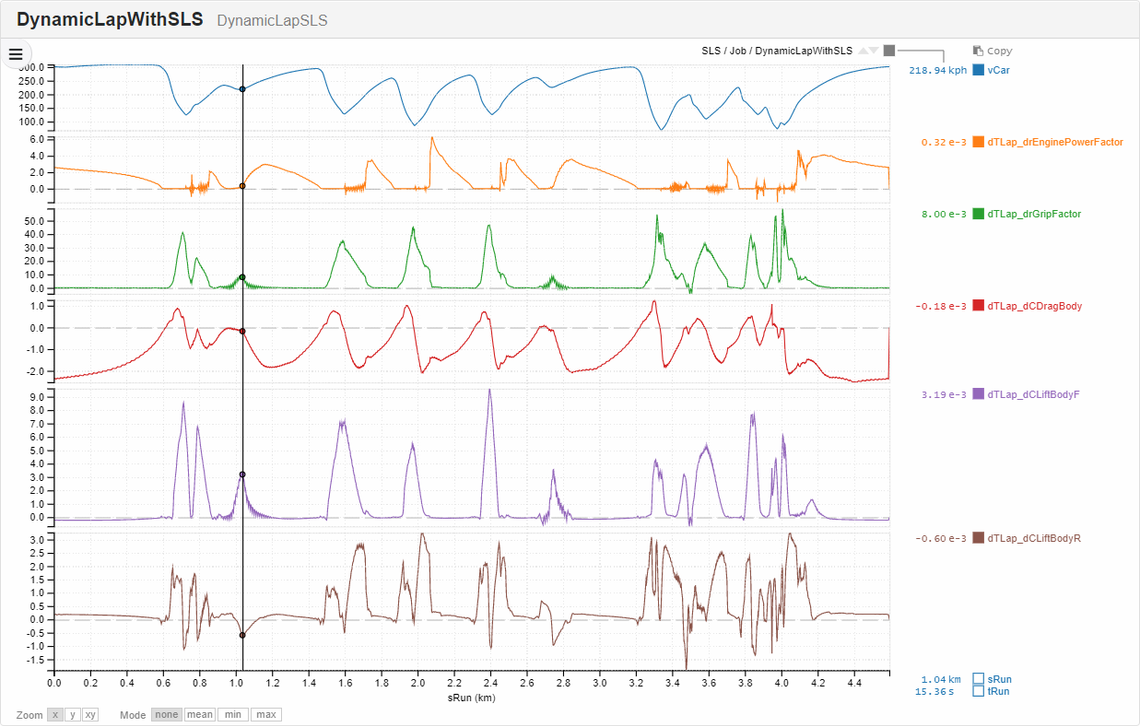
Tyre Replay
Another new simulation is available to help with tyre tweaking. It enables you to interrogate the tyre model in detail as you make changes to the tyre parameters (Canopy or Pacejka). The required inputs are:
tRun
FzTyreXX
aSlipTyreXX
rSlipTyreXX
aCamberTyreXX
Running Tyre Replay will then return the tyre forces. In the example below we sweep tyre longitudinal stiffness for different Fz levels to look at the effect on FxTyre, but you could make a much more complex exploration to extract the data you need in order to make your own tyre tweaking tool.
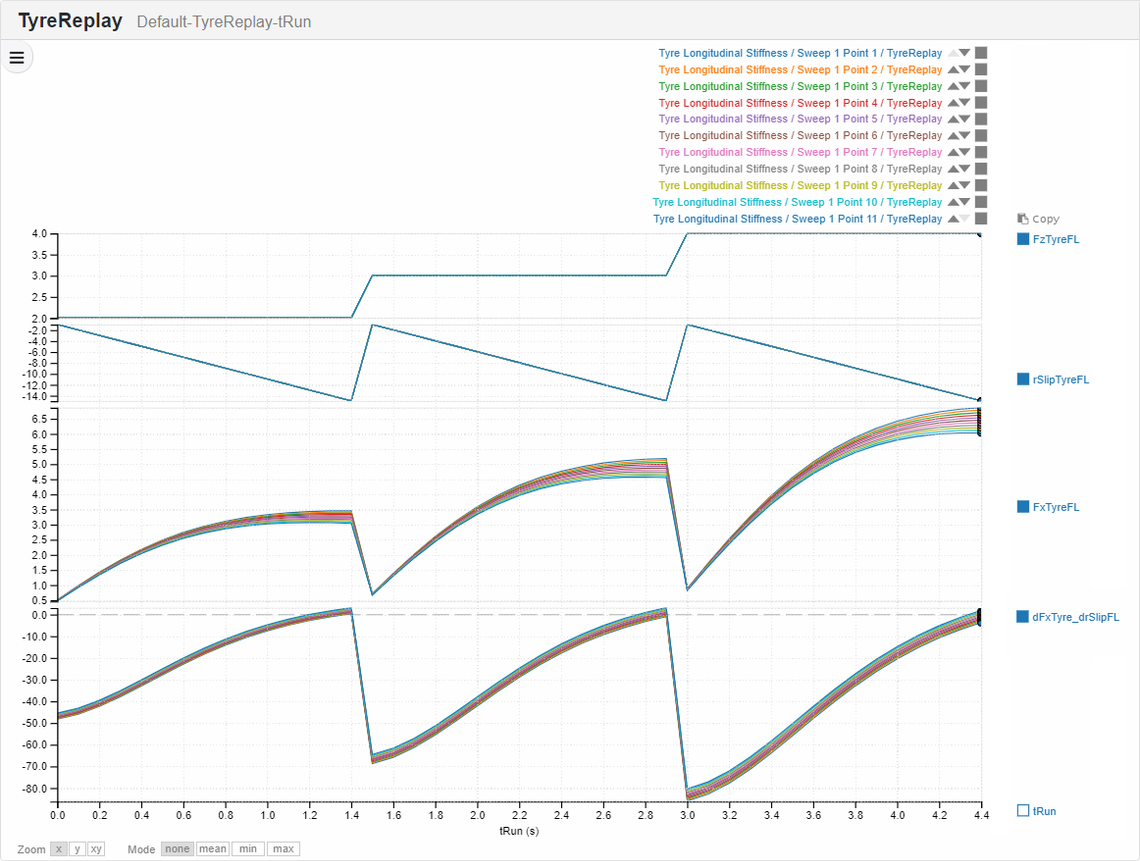
Correlation Metrics & Parallel Coordinates Chart Enhancements
If you’re dialing in your correlation after a practice session, you can import your telemetry data and run an exploration sweeping through uncertain parameters (for example, grip level, gripbal, aero, plank height…) and use the correlation metrics to return the mean and mean squared delta to your telemetry channels.
The parallel coordinates plot can then be used to fine tune your correlation. You can now zoom in on output axes to home in on your perfect correlation.
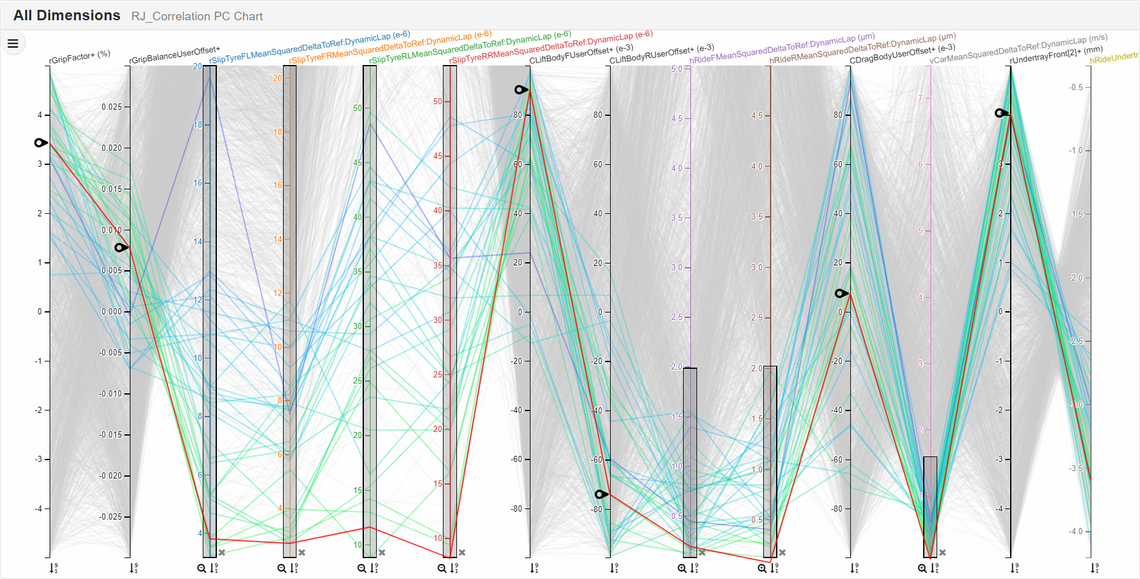
Telemetry Import
It’s now super easy to load telemetry into Canopy:
1) Organise your data in a .csv file using the same format as we export channels in.
2) Click “Import Telemetry” and select your file.
3) To avoid having to rename all your channels to Canopy naming convention by hand, you can specify a channel name mapping (see example below) which can be applied whenever you import new data.

Encryption of Configs
In case you would like to collaborate with other teams but want to lock down certain parts of the car/track so they aren’t visible, it is now possible to enable encryption for any section. Contact us for details if you have a specific use case in mind.

Vector User Maths
Simple vector channels can now be calculated in User Maths. The example below shows how you might calculate brake power.
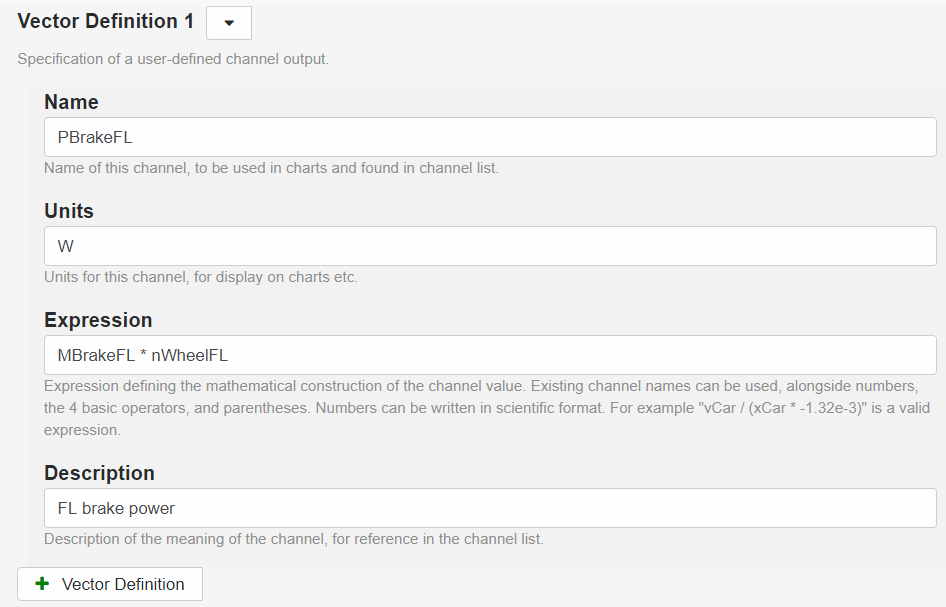
Version History
It is now possible to view the version history of a car by clicking “Recent Versions”.
Hillclimbs and non-circuit tracks
Tracks no longer have to join at the start-finish line, so you can now simulate Pikes Peak hillclimb or look at a specific sector or stage of a track. To do this, open up trackPeriodicity and deselect the bTrackPeriodic option and enter a starting speed.
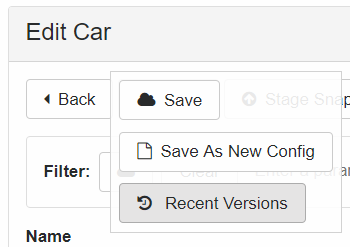
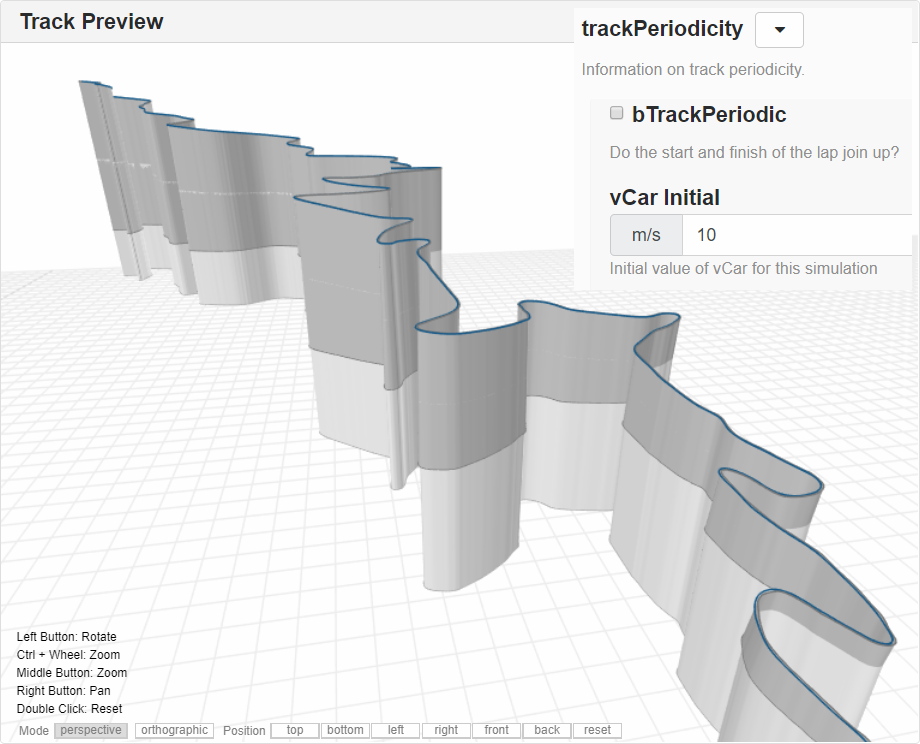
.json Snippets
You can now import/export individual sections of the car. This might be handy if you want to build up a local database of tyres for example, and load these onto your car, or you only want to edit a specific section of your car using a text editor.

Start-Finish Line Offset
The start-finish line can be conveniently moved without changing your track edges or racing line by applying an offset.

Drive Cycle Simulation
The compatibility of this simulation has been improved with different vehicles, and additional output channels have been added to see where your energy is being dissipated. If your road car has additional battery loads from headlights, PAS, HVAC etc, then a vector PAdditionalBatteryLoads can be specified in your drive cycle.
Did you know…
You can copy the legend values at the current cursor position using Ctrl+C, or by using the copy button in the top right of the chart.
If your sims don’t appear to be running as smoothly as you would expect, you can check our status monitoring here:
http://status.canopysimulations.com/
The effect of DRS can now be run in straight sim. Open up the car parameter vCarDRSStraightSim to specify the speed you want to activate DRS.
Battery internal resistance can now be modeled as a function of battery state of charge and temperature.
Mean power: suppose that instead of having a fixed number of laps to race, you have a time limit in which to complete as many laps as possible. This makes it tricky to apportion energy per lap. Now you can open the powertrain parameter PMeanMax, which will allow you to limit the mean power per lap in order to complete the race.